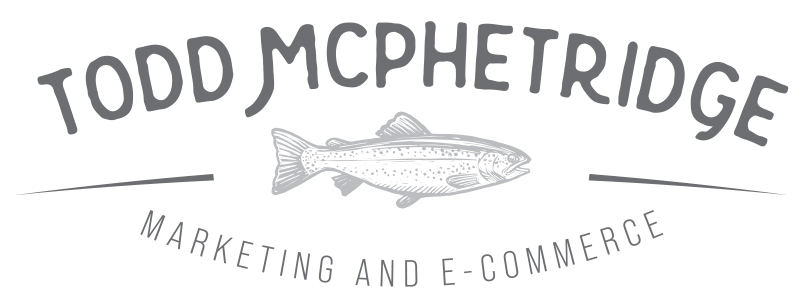Discounts are easy to start and hard to stop. They boost topline in the short term, train customers to wait, and quietly erode contribution margin. For DTC brands, the cure is not “no promos.” It is a clear operating model that replaces knee-jerk discounts with offer design, pricing structure, and lifecycle programs that protect cash and brand equity. This is a practical playbook from a ecommerce consultant, and marketing consultant who helps leadership teams rebuild revenue quality without killing growth.
How Promo Addiction Shows Up
- Rising promo exposure: more than a third of monthly orders include a deep discount.
- Dead zones between promos: revenue slumps whenever a sitewide sale ends.
- Worsening payback: CAC looks stable but contribution margin falls, extending payback days.
- Offer myopia: teams reach for percent-off instead of improving price justification, bundles, or PDP proof.
- Brand drift: customers expect deals, reviews mention price more than value, and referral quality drops.
The Economics (Plain English)
Before changing the calendar, align on the math the board will use.
- Contribution Margin (order level): revenue − product cost − shipping subsidy − variable processing fees.
- Promo Cost: discount dollars + incremental return cost + lift in support cost, if any.
- Margin Impact per 1% Discount: depends on product margin and attach rate—publish a simple reference table for your brand.
- Healthy Payback: days until cumulative contribution margin per acquired customer ≥ CAC. Deep promos often improve first-order conversion but push payback out if margin is too thin.
Audit: Find Where Margin Leaks
Run a blunt, two-week assessment that executives can read in five minutes.
- Promo exposure by week: percent of orders with > standard incentive (e.g., above a 10% welcome).
- Contribution by promo type: sitewide vs. SKU/bundle vs. cart-threshold vs. channel-specific.
- Promo cannibalization: share of discounted orders from repeat buyers who would have purchased anyway.
- Elasticity clues: conversion and AOV deltas when switching from percent-off to value-add offers.
- Customer behavior: average time between orders for promo vs. non-promo cohorts; subscription churn around sale events.
Guardrails the Board Will Back
- Promo Exposure Cap: ≤ 30–35% of monthly orders influenced by deep promo.
- Category Floors: minimum contribution per order by category; promos cannot break the floor.
- Event Cadence: no more than one sitewide promo in a rolling 30-day window; the rest must be targeted or value-add.
- New Customer Integrity: welcome incentive is the ceiling for customer acquisition ads unless pre-approved.
- Reporting Rule: every promo recapped with conversion, contribution per order, and cohort payback effects.
Redesign the Offer Architecture (No Blanket Sales)
Shift from percent-off reflexes to structured offers that signal value and protect contribution.
- Price Justification Near the CTA: materials, origin, durability, cost-per-use, care. When value is obvious, you need less discount to convert.
- Bundles That Make Sense: a “starter set” that solves a whole job at a sensible total price; show the math vs. buying items separately.
- Cart-Level Add-Ons: small, practical items that improve outcomes (care kit, travel case, filters). These lift perceived value without cutting base price.
- Milestone Offers: value adds tied to usage or loyalty (refill reminder with free accessory; 3rd order perk). Not percent-off, but earned value.
- Limited Runs and Early Access: scarcity and timing replace discounts as the driver for action.
Promo Calendar: From Chaos to Cadence
Keep the revenue drumbeat without training your audience to wait for the next code.
- Anchor Events (few per year): major seasonal or brand moments with tightly defined windows and inventory plans.
- Theme Weeks (no code): education-led campaigns that highlight use cases, materials, and outcomes with bundles and value adds.
- Targeted Nudges: winback or high-intent segments get narrow incentives based on behavior (e.g., add-to-cart without checkout).
- New Product Energy: early access lists and creator seeding replace across-the-site discounts.
Measurement: What “Good” Looks Like
Report outcomes on one page so finance and growth make the same decision.
- Contribution per Order: promo vs. non-promo baseline.
- Promo Exposure: weekly % of orders with deep discount; trend line visible to executives.
- AOV and Attach Rate: impact from bundles and add-ons during non-promo weeks.
- Payback by Cohort: promo-exposed vs. clean cohorts at day 30 and day 60.
- Repeat Behavior: time to second order and discount dependency of promo-acquired customers.
Playbook: Replace Percent-Off with Value
1) Clarify Value on the PDP
- Move delivery window and returns summary near the CTA.
- Add a concise “why it costs what it costs” block: materials and origin, durability claims with context, care.
- Lead with a short in-use video; follow with closeups, scale, and customer media.
2) Build Sensible Bundles
- Identify the job to be done; design a starter bundle that completes the job.
- Price the bundle to protect contribution; show cost-per-use to reframe value.
- Merchandise the bundle as a peer to the hero SKU, not a hidden upsell.
3) Design Add-Ons that Feel Like Upgrades
- Offer accessories that remove friction in setup or care.
- Use clear copy: “Add for easier cleaning” beats “Customers also bought.”
- Keep add-on selection one click; don’t derail checkout.
4) Rewire Lifecycle
- Welcome: emphasize value, not urgency; preference capture for use case and budget sensitivity.
- Browse/Cart: outcome-oriented proof snippets; gentle nudge to bundles instead of percent-off.
- Post-Purchase: care tips, quick-start content, and milestone perks that encourage full-price repeat.
- Winback: targeted incentives after value cues fail, not as a first move.
Executive Truth Table (Promo Decisions)
| Decision | Primary Metric | Secondary Check | Rule |
|---|---|---|---|
| Run a sitewide promo | Contribution per order forecast vs. floor | Inventory coverage and cash needs | Only if margin floor is safe and inventory requires acceleration |
| Switch from percent-off to bundle | AOV and attach rate | Promo exposure trend | Prefer bundle if AOV lift ≥ discount lift and exposure cap is near limit |
| Offer targeted incentive | Segment intent score | Historic cannibalization | Limit to high-intent segments with low cannibalization risk |
| Evaluate last event | Contribution delta vs. baseline | Day-30 payback shift | Retire events that lower contribution or extend payback beyond guardrail |
Case Vignette (Condensed)
A home furnishings brand ran near-constant 20% off. Promo exposure averaged 52%, and payback crept from 48 to 78 days. We introduced guardrails, rewrote PDP price justification, launched two job-based bundles, and shifted the calendar to one anchor event per quarter with targeted nudges in between. After eight weeks:
- Promo exposure fell to 34% while revenue stayed flat week over week.
- Contribution per order rose 11% in non-promo periods.
- AOV increased 9% from bundles and checkout add-ons.
- Payback tightened to 57 days without cutting prospecting.
Common Failure Modes (and Fixes)
- “We need revenue now” reflex: sitewide codes become the default. Fix: publish a promo request checklist with margin and cohort fields; require leadership sign-off.
- Bundle confusion: irrelevant item combos. Fix: design bundles around clear jobs and show the math.
- Add-on clutter: too many choices at checkout. Fix: limit to one or two high-value add-ons with concise copy.
- PDP proof gap: no rationale for price. Fix: add materials, origin, durability, and care near the CTA.
- Reporting that hides margin: ROAS up, profit down. Fix: place contribution next to ROAS on every recap.
FAQ: For DTC Leaders Evaluating Support
How does a Fractional CMO help end promo addiction
By installing guardrails, redesigning the promo calendar, improving PDP value communication, and shifting offers to bundles, add-ons, and milestone perks that protect contribution.
What does an ecommerce consultant look at first
Promo exposure trends, contribution per order by promo type, cohort payback, PDP proof, and lifecycle messaging that may be over-reliant on urgency.
Will revenue dip when we reduce discounts
Not if you replace percent-off with value, bundles, and targeted nudges while improving PDP clarity. Expect a short stabilization period followed by healthier revenue.
How do we know the new approach works
Track contribution per order, promo exposure, AOV from bundles/add-ons, and payback by cohort. The scorecard should make the trade-offs obvious.
Get Started Today
If you’re ready to move from promo dependency to margin-safe growth, let’s build a plan. I provide marketing consulting services, DTC consulting, and ecommerce consulting to help you:
- Set board-ready guardrails for promos, contribution, and payback
- Redesign your promo calendar with value-driven offers
- Upgrade PDP proof, bundles, and add-ons to raise AOV
- Launch an executive scorecard that keeps revenue healthy
Get started today: Book your strategy session and turn margin-safe rules into predictable revenue.

















